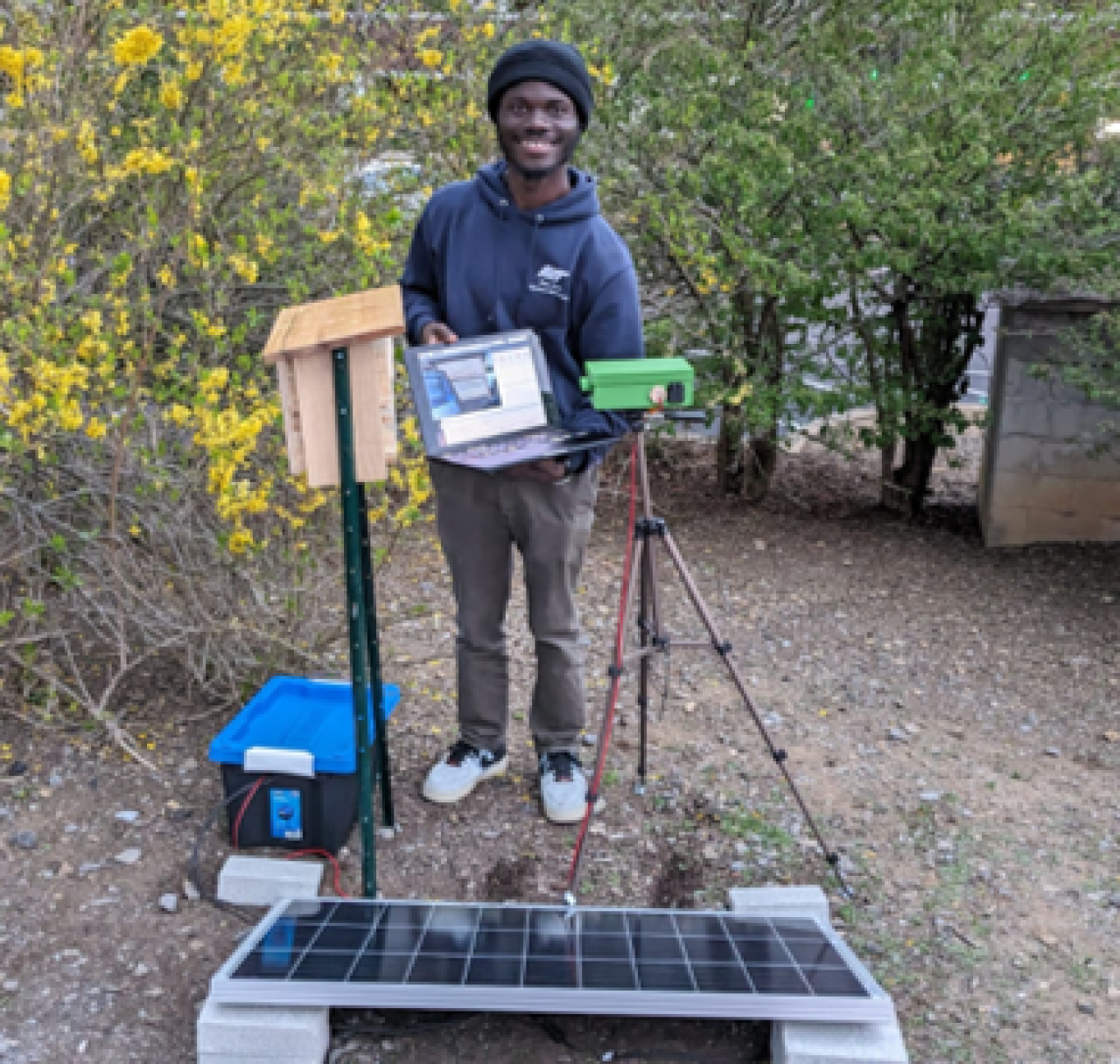January 01, 2025
Student Spotlight on Edward Amoah: AI-powered Monitoring of Wild Bee Behavior

Imagine having a summer house in Florida that you visit yearly for two weeks for a summer vacation with your family. Imagine that you consistently go on this vacation in June because the weather is expected to be warm and lovely for enjoying the beach. Now imagine that for the past decade, the weather has increasingly become colder and wetter in June, reducing the time you can spend enjoying the beach during your vacation. Wild bees in Pennsylvania are having the same challenges but instead of ruining their vacations, it could be harming their populations.
“We know the spring weather is getting more unpredictable, but we do not know how much this harms wild bees. I am using an automated video surveillance systems and Artificial Intelligence (AI) powered video processing software to investigate how climatic conditions such as temperature and precipitation affect the foraging and nesting behavior of wild pollinators”- Ph.D. Ecology Candidate Edward Amoah
Most wild bees like the horn face mason bee (Osmia cornifrons) reproduce only once a year, making their populations particularly vulnerable to environmental factors that can negatively impact their fitness during the reproductive phase. Observing the foraging and nesting behavior of wild bees in different landscapes and weather conditions is needed to understand how these factors can affect wild bee population dynamics. Edward’s technology enables observation and investigation of wild bee behavior across spatial and temporal scales that traditional methods cannot achieve. “Traditionally, scientists manually observe and record insect activity, which involves sitting for hours at a single location and watching fast-moving insects. This approach is both time-consuming and prone to errors,” explains Edward Amoah.
The horn face mason bee undergoes diapause as adults, hibernating in cocoons over the winter and emerging in early spring. The timing of their emergence is influenced by the duration of winter and prevailing temperatures. After emerging, they mate and search for nest cavities to lay eggs for the next generation. These bees forage for mud to partition their nests into individual brood cells and gather pollen and nectar to provide for their eggs. Weather conditions may significantly affect their foraging abilities; if it is too cold, wet, or windy, the wild bees may be unable to forage effectively and will produce fewer eggs.
Pennsylvania is expected to experience warmer winters and wetter spring conditions. These changing environmental conditions may affect wild bees and the vital ecosystem services they provide for us. Warmer winters, for example, could lead to the earlier emergence of bees than usual, potentially disrupting the timing of pollination for orchard farms that rely exclusively on wild bees. Additionally, human practices, such as the excessive application of pesticides, can reduce the foraging abilities of the bees and result in the death of bees due to toxic chemical exposure. To effectively incorporate and utilize wild bees in agriculture, it is essential to understand how weather conditions and human activities impact their population dynamics.

According to Edward Amoah, the new AI-powered methodology for insect behavior studies will greatly enhance scientists' understanding of how changing environmental factors impact bee populations now and in the future. “Earlier published studies observing the influence of weather conditions on wild bees could only observe the insects for six days at one location. However, with this AI-powered approach that I have developed, I can observe the bees for several weeks across multiple locations simultaneously,” says Edward Amoah.
There are over 400 different bee species in Pennsylvania alone, and all these bees may respond differently to various environmental conditions. Edward’s research can help us understand how climate change and other human activities are affecting the variety of bees in Pennsylvania and beyond.
Edward Amoah is a Fellow in the INSECT-NET Training Program. Edward’s is a Ph.D. Candidate mentored by Christina Grozinger and Erica Smithwick in the Entomology and Geography department, respectively. Edward’s research is funded by the INSECT-NET Fellowship.
This article’s author, Gloria Mangoni, is a PhD student in Rural Sociology and International Agriculture and Development and is mentored by Dr. Leland Luther Glenna in the Department of Agriculture, Economics, Sociology, and Education. This article was written as part of the 2024 INSECT NET Science Communication Workshop.
